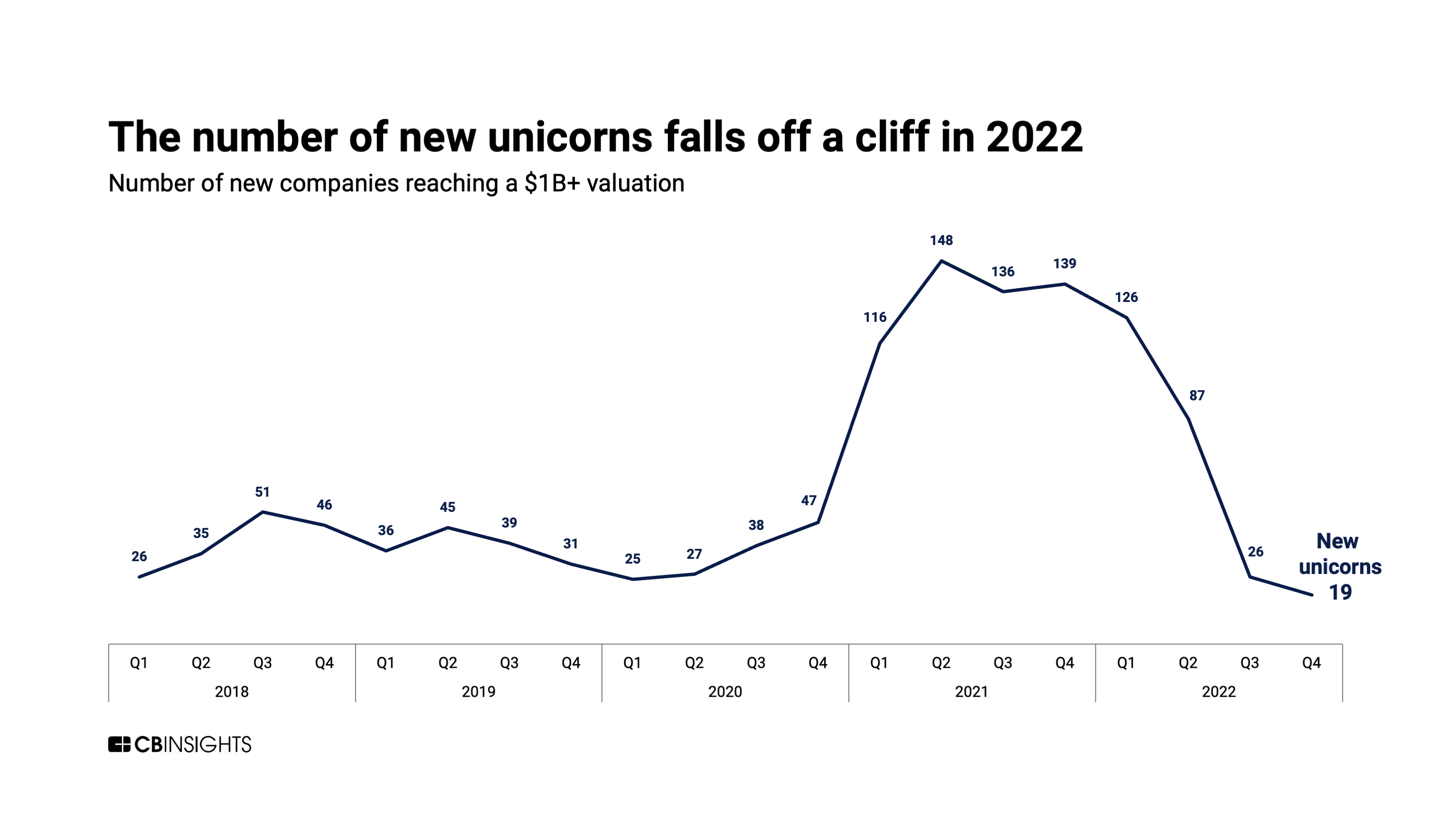I bet you thought that unicorns don’t exist. Well, the kind that we envision as a horse-like creature with a horn attached to their noggin still don’t exist, but what they represent do.
The magical, ethereal, seemingly impossible idea of a unicorn has been adopted and brought to existence in the least expected category of thought: business. Unicorns are a concept in the world of startups that was coined by Aileen Lee in 2013 but has only gained serious attention since 2021. By definition, a unicorn startup is “a privately held startup company with a value of over one billion dollars” (Investopedia). ‘Privately held’ means that these are startups that haven’t even reached the stock market yet!
Ironically, unicorns flourished while the rest of the world crashed—or continued crashing—in 2021. Last year doesn’t even compare to the record shattering year that 2021 was for unicorn startups, with 2022 bringing to fruition 258 unicorns while 2021 brought in 539—over double that of 2022. Even though 2022 brought in half the unicorns that 2021 did, that number is still around double the average of all years prior to 2021 (CBInsights.com).
The rare and mythical concept that unicorn startups were named after is being testified as their occurrence increases, threatening to propose that they may even be common in years to come. The puzzling part is the exponential success that happened during such a historically poor time in recent US history. Boundaries of what the world has known to be possible is being continually shattered. So much so that the concept doesn’t just end with unicorns, there are decacorns ($10 billion) and hectocorns as well ($100 billion valuation). With 2022 not even comparing to 2021, the question begs: what is the difference between these two years despite their equally poor economic conditions? Furthermore, which year should we take as the new norm? Was 2021 just a fluke?
To get more insight into this monumental record for unicorn startups, many sources have put in their two cents on what they deem the probable reasonings. Gabrielle Bienasz from Inc. infers that it may be due to the increase in ‘non-traditional’ investors coming into the startup market. To clarify, non-traditional investors regarding startup capital encompasses everything outside of venture capital firms such as hedge funds, mutual funds, pensions, sovereign wealth funds, and corporations. Investors from all realms have come to realize the value hidden in startups fighting for their chance at success.
Sophie Downes, also from Inc., mentions that this type of non-traditional investor is often preferable to startup founders as they are less likely to involve themselves in company decisions and they tend to have flexibility on deal terms and valuations since they invest more quickly and have more cash on hand. It only makes sense that the terms are more flexible as startup funding is only a small segment for these generally diversified investor types which decreases the stake for the agreement. For venture capital firms, startup funding is their livelihood and expertise, so their terms are bound to be stricter in order to be deemed sensible for their own portfolio of risk. With this perspective, we can understand the increase in the phenomena of ‘unicorns’ as a result of investor sentiment, but with the downturn of unicorn occurrence of last year, what can we expect for the year ahead—or rather, what can we predict investors to expect?
To understand the full scope of the situation, we have to introduce another key player into the game, the antithesis of unicorns: camels. Alex Lazarow coined camel startups in 2017 as startups who succeed by “prioritizing sustainability, balancing strong growth and cash flow.” Unrelated and irrelevant physically and geographically to the idea of what we imagine to be unicorns, camel startups were coined to represent the opposite method of survival than that of unicorn startups. Where unicorns shoot to the clouds using what is easily considered a magical amount of initial funding from private investors, camel startups use strategy and reserves to endure harsh conditions, which in economic terms can translate to anything from a short-term recession to an outright pandemic which shuts down entire sectors of the world’s economy as we saw with COVID-19.
Instead of expending all funding in an all-or-none effort to make it big, taking a shot at the dream of being a unicorn, camels plan out their funds to last them through tough times in order to make it out alive once the demanding times subside. To put this into perspective, in times of monetary tightness that we have become further entrenched in over the past year and with fears that this tightness will continue for an indefinite amount of time due to brutally persistent inflation and talks of tax reformations, we may see a record number of camels this year as many startups may choose to await patiently for more opportune times to expend their funding reserves. Perhaps the record year for unicorns was a residual result of pandemic-related coincidental circumstances rather than something we can expect to be the new norm in years to come.






